|
Part 3: China's Political and Economic Image
The image of China's ruling party: Concentration of power and having exceptional organizing and mobilization capabilities.
In both developed and developing countries, people share the impression that China's governing party has a concentration of power, exceptional organizing and mobilization capabilities, and is well-organized. In addition, 45% of the respondents in developed countries thought China's ruling party faces a serious problem of corruption, while nearly one third (26%) of those in developing countries think China's ruling party is supported by the people. The Chinese respondents believe that their ruling party has a strong self-discipline and self-purification capacity, though it is tainted with corruption.
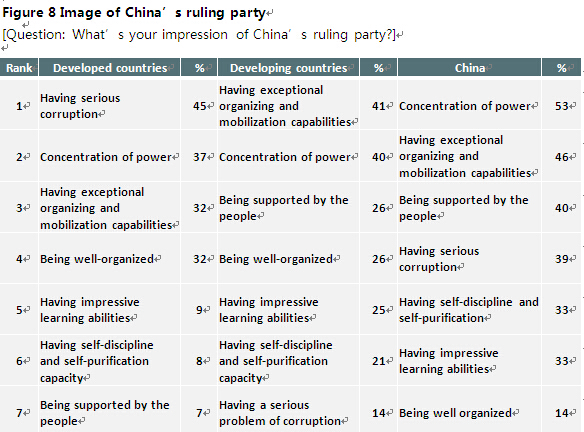
China's concepts of development are widely recognized by the global community.
Overseas respondents have a relatively high awareness and recognition of China's development philosophy and international initiatives. They are most familiar with such concepts as "a new model of major-country relationship between China and the US" and "law-based governance". The "Five Principles of Peaceful Coexistence" and "neighborhood diplomacy featuring amity, sincerity, mutual benefit and inclusiveness" are the most supported by overseas respondents.
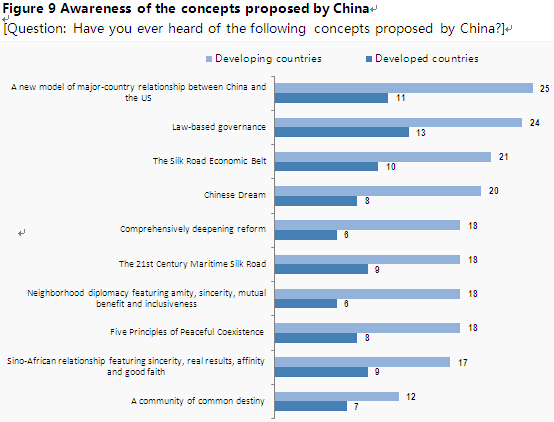
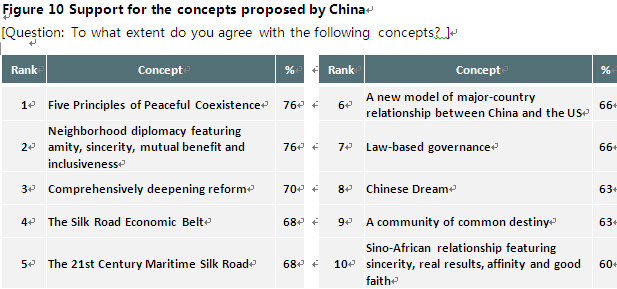
Developed and developing countries have different understandings of China's development path and model.
In developed countries, 31% of the respondents called China's development path and model "a model of centralization led by the Communist Party of China", and 23% thought that "the basis is letting the state-owned economy play the leading role". Most respondents in developing countries called the China model "an innovation based on China's history, culture and reality", believing China's path and model to be "the main reasons for China's amazing development".
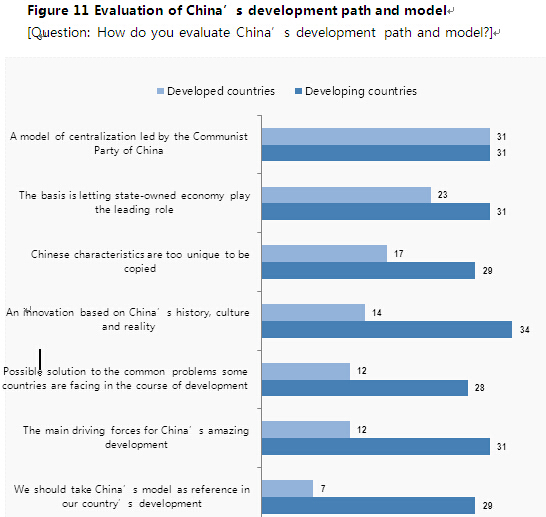
China's economic influence is recognized by the global community.
Overall, overseas respondents agreed that "China's economic growth promotes global economic development", "My country benefits from China's economic growth" and "China is willing to cooperate with my country in economy and trade, and share the fruits of China's economic development". By contrast, "China's economic growth promotes global economic development" received the most recognition. As seen from the evaluations given by the respondents from the eight countries, developing countries tend to acknowledge China's economic influence more than developed countries.
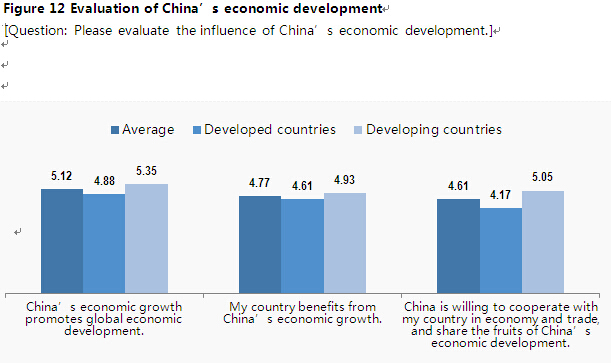
Chinese enterprises' presence brings both opportunities and challenges to local communities.
In the eight countries surveyed, 36% of the respondents thought that Chinese enterprises doing business in their countries would "bring new capital and technology", 32% thought they would "increase employment opportunities", 25% thought they would "increase government tax revenue", and 18% thought they would "promote the upgrading of the local industrial structure". There were also people who thought the arrival of Chinese enterprises would pose some threats to the local communities. Those threats include "hindering the development of local enterprises and local brands", "destroying the local environment", "exploiting local energy and resources" and "breaking the balance of the original industrial chain".
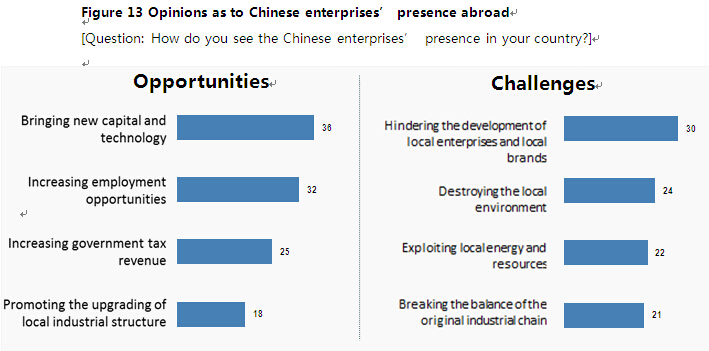
For overseas respondents, well-known Chinese brands include Lenovo, Huawei, Air China, Haier and Alibaba.
The Top 10 Chinese brands known to the overseas respondents are, in descending order, Lenovo, Huawei, Air China, Haier, Alibaba, ZTE, Hisense, TCL, Bank of China and China Mobile. People in developing countries are generally more familiar with Chinese brands.
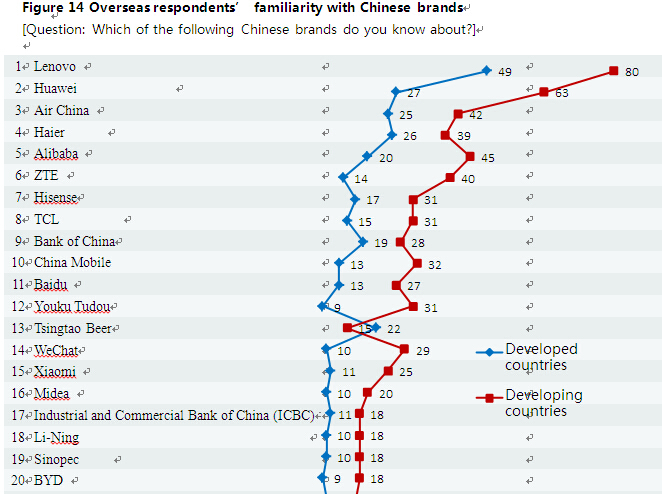 
Chinese products need to improve quality and after-sales service.
Compared with 2013, the overseas overall rating of Chinese brands has improved, but "low quality" and "food safety problems" remain the main factors that hold overseas customers back from choosing Chinese brands. After-sales service also needs improvement.
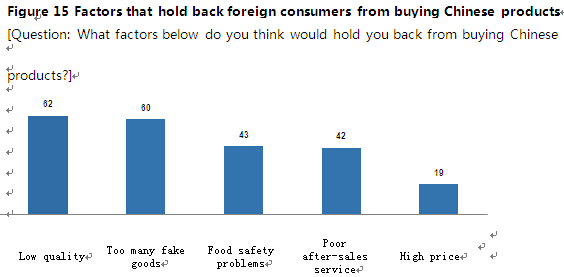
| 